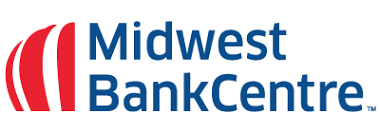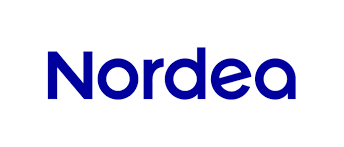Hurricanes Can Show Us The Value Of How Might We and Why What’s Stopping Analysis?
The Power Of 3 Simple Words
Hurricanes Can Show Us The Value Of How Might We and Why What’s Stopping Analysis?
Here’s what we know – based on our years of experiential training of more than 21,000 people around the world one of the weaker areas of innovation occurs in the area of defining problems.
The majority of people the world over lean towards implementation of solutions. We as a species tend to dislike the ambiguity and uncertainty we experience when facing novel problem situations. No wonder why there are so many jobs, products and services that offer solutions these days.
Being comfortable enough to resist the urge to jump into problem solving and instead trying to first conceptualize and and truly define the problem is a little bit foreign to most of us because we have alway been schooled on solutions, not discovering problems and enquiring.
Defining problems in most of our pasts was typically done by our teachers and professors and rarely were they looking for real creativity in our work, even if you were in art class.
In the world of innovation, we need to take over this task as there are no teachers to give us the ready-defined problems we are supposed to solve if we are to do well.
Problem definition starts with good fact finding.
Let’s imagine that we are the government, the cabinet of a tropical country and we have been dealing with a problem that’s been going on for years and years –hurricanes. They happen every year and seem to be getting worse so we decide we’re going to do something about the hurricane problem for our people.
After extensive and thorough fact-finding and discussing hurricanes – we diverge, talk to experts everywhere, analyze the data – we end up converging upon five very clear simple facts that held significant weight in our discussions.
- Many people do not reach the shelters on time.
- Injuries and deaths due to hurricanes are unacceptably high
- Our population is diverse and speak multiple languages
- A lot of panic and chaos is evident
- The media are starting to question our commitment to the hurricane situation.
Side Note: See how the statements of the facts above are very clear? This is one of the things about fact-finding that’s vital. Simple facts lead to better-focused problem definitions.
These facts are golden, but, as stated they appear to be deadends, to be accepted as realities of life. The innovator, however, sees opportunity in these facts. The innovator sees them as challenges that, if solved, would lead to action that improves our nation’s ability to manage hurricanes. The innovator ponders these facts and asks, “How might we…?”
Taking the facts and stating them in the form of questions beginning with “How Might We” is a powerful way to visualize how to go forward. Equally important is that using this way of thinking sets us out on a positive mindset focusing on WHAT’S POSSIBLE vs WHAT’S NOT POSSIBLE?
What if we took the five facts we were focused on above with respect to the hurricane and added some momentum to them by putting them in the form of “how might we?”
- How might we get the people to the shelters in time?
- How might we save more lives at hurricane time?
- How might we get hurricane warnings to our people quickly?
- How might we ensure that everybody understands the warning?
- How might we keep people calmer during hurricanes?
- How might we get re-elected?
- How might we better protect our tourism industry?
- How might we keep many more people safe?
Stating problems in the form of “How Might We” as a group and divergently thinking of a variety of different ways to define the problem, we can better discover focused definitions that offer us maximum leverage to do something that addresses many of the problems our country suffers because of hurricanes. After this divergence on possible “How might we..?” problem definitions, we, the cabinet, can start to narrow down the list until we have chosen the problem definition(s) most crucial to solve.
Stating things in this manner, as “How might I?, or How might we?” also provides forward thinking to shift from inertia to innovation.
Once we narrow down the problem(s) we want to focus on, we can get even more clarity through a second way of exploring the problem situation we have defined, by using the “Why? What’s Stopping?” Analysis.
With the hurricane example, let’s say that the cabinet focused on “How might we get people to the shelters on time?
If we ask “What’s one thing stopping us from getting people to the shelters on time?”, it might lead to a response of, “We don’t have enough shelters.” And this factual response would then be turned into a new problem definition, say, “How might we build more shelters?”
We might continue to explore why we currently cannot get people to shelters on time by asking, “What else is stopping us from getting people to the shelters on time?” That could in turn lead to, “We are not warning people early enough”, which would become another problem definition, “How might we warn the people earlier about hurricanes?”
You can easily follow the logic flow when combining “How Might We” with “Why? What’s Stopping?” and the pattern of sub-problems underlying the overall issue becomes clear.
Combining “what’s stopping us” with “how might we” builds not only momentum, but also a focus to define the first problem we are going to solve.
Applying this analysis to all the facts would result in a “map” of logically linked challenges that together make up the overall issue (in our example the hurricane problem). As a group by asking “what’s stopping” you narrow down to more tactical and actionable problems. By asking “why?” you broaden or make the problem more strategic.
What ultimately happens by using facts about the situation to better define problems as “how might we?” challenges, and then logically linking them in a challenge map, is that you are able to confidently determine which problem(s), if solved, will provide the most benefit.
The video below provides further illustration of this process and provides some history to its origins at the same time.
Ready To Drive Change?
You’re an innovator. You just don’t know it yet. Let us show you how.
Is your team thinking innovatively?
Learn more about our innovation programs.
Contact us to drive more innovation in your teams.


































